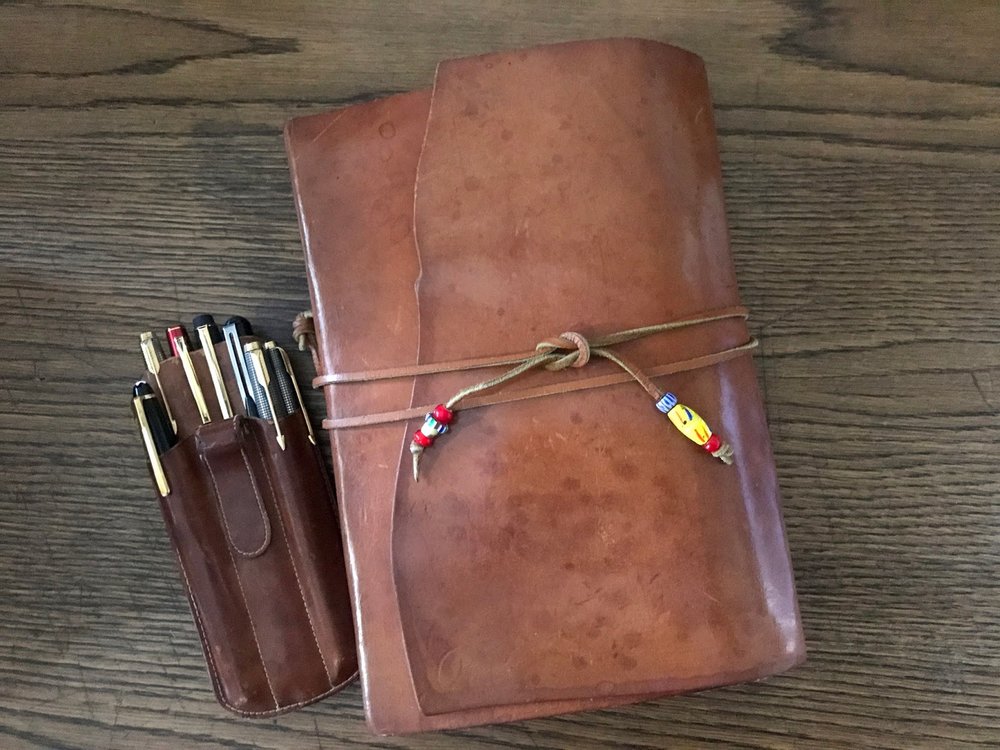Simple Leather Journal — 15 years on
My faithful companion now for 15 years, over five continents, tens of thousands of miles. Nothing fancy: It's a one-piece unstructured cover cut from simple vegetable-tanned cowhide, which was simply finished with olive oil. I incorporated the natural edge of the hide into the front cover. (Find a book about the size you want, cover it with plastic, get the leather wet, and shape it to the book and let dry; when the leather is wet, you can also score the cover with decorations—I added my initials.) As you can see, after 15 years of use it gets a nice patina but holds up well; it's been on five continents with me—tens of thousands of miles!

I use Bee Paper 90-pound 9x6 sheets, which is inexpensive but good 100% cotton paper that is archival and holds up well to watercolor washes.

A couple of cheap leather bootlaces act as the sheet binder and the keeper (decorated with African trade beads).






When I fill up a journal, I unbind it and transfer the pages to inexpensive three-ring binders (last photo; I plan to cover these in nice leather eventually—I have 40 years' worth!).
Advantages: inexpensive, customizable (can add fancy papers, insert memorabilia, maps, etc.), lays flat, durable. Disadvantages: double-page spread is not contiguous (but it works fine for journaling), it's self-made so it's not as easy as buying a new notebook off the shelf, threading the leather cord into the holes is a pain, and sometimes the flexible cover makes it hard to draw (but I found a plastic board to put behind it when I need).
[Related post: Field Sketching Kit — for stand-up sketching]

